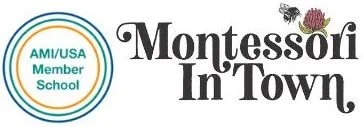Positive Phrasing for Positive Discipline
October 6, 2015
Ginni Sackett
Positive Phrasing is about aligning the emotional and verbal content of communication in positive respectful and productive ways. Positive phrasing is the art of saying what is rather than what isn’t.
Positive Phrasing means our body language, facial expression, tone of voice, inflection and words all convey the same meaning and intention; when these are not aligned, the receptive child will always default to the non-verbal and emotional intention rather than the actual words.
Positive Phrasing has two qualities: it is True and it is Brief
What is true? Some synonyms for true are “factual, accurate, exact, correct; real and genuine, valid; authentic and sincere”. Two words for the opposite of true are “false” and “fake”.
What is brief? “Short, concise, to the point; pithy.” What is the opposite of brief? “Lengthy.”
If we mindfully incorporate true and brief into our verbal and non-verbal communication, we will truthfully communicate our intention in as few words as possible. This results in effective communication with young children. The message we send will be the message received. This takes time and practice!
Why is positive phrasing effective?
Because it is clear, it is unambiguous, and it invites cooperation.
Positive Phrasing ...
... is always delivered as a statement – Avoid choice when there isn’t actually a choice; Avoid changing a statement into a choice by adding ‘Okay?’
... requires a commitment to say what we mean and mean what we say
... is honest – but also respectful and compassionate
Always examine the intention behind your communication: ‘message received is message given’. Let your facial expression, body language, inflection and tone of voice match the positive intention of your words.
Avoid no; use it as little as possible; save it for when it is really necessary – so that it retains its legitimate power to support physical and psychological security: we want a child to trust our ‘no’ – it means don’t do anything until I get there.
Offer choices whenever possible – any chosen option must be acceptable and possible
Be careful with “please” – “please” is used for courtesy, as an invitation to cooperation and so it also implies a choice; “please” has an important role in social communication, but it isn’t really a ‘magic word’
Positive Phrasing as part of aligned communication has four benefits for the child:
1. Clarity. The message is clear. No tricks, no confusion, no manipulation.
2. Respect. The child experiences a very courteous regard for feelings and dignity.
3. Trust. The child trusts that the adult says what he means and means what he says. In this big world that I am trying to adapt to, I can trust that when my adult says something, it happens.
4. Modeling. The child will naturally adopt and cultivate this kind of communication when this is the communication he experiences and observes from others in the environment, and particularly when the adult that he loves and admires communicates in this manner.
Some Helpful Words for Positive Phrasing
Can
Implies ability; gives a clear message of the one thing that is possible in the situation; communicates a confident expectation that the child is able to carry through on the desired action.
Sample “can” statements: You can get in the car. You can join us. You can hold your cup carefully. You can use that material when it’s back on the shelf. You can keep all the paint on the paper. You can sit with your hands in your lap. That’s something we can talk about later.
May
Works just like ‘can’, but it’s a little stronger because is also implies permission.
With ‘can’ and ‘may’, the speaker is still ‘off the hook’ – a direct command has not been given, so if the child doesn’t follow through or contradicts the statement, the adult doesn’t have to assert power, and has time to re-phrase or re-think the communication.
Let's
Is friendly and companionable, stressing that we’re doing something together with the implied message that of course, you want to do it too! ‘Let’s’ is a variation of the ‘can’ statement – simply changing the subject of the statement from the particular ‘you’ to the convivial ‘we’.
Sample “let’s” statements: Let’s go to the car now. Let’s keep our feet on the floor. Let’s eat now. Let’s get ready for bed now. Let’s see if we can put all the puzzle pieces back in the box. Let’s see how carefully we can carry our dishes to the sink. Let’s put the paper in the recycling.
It’s Time To ... Are ...
De-personalize the directive even more – it’s not about what anyone does or doesn’t want to happen, it’s just time for something to happen and/or affirms and encourages an on-going positive situation.
Sample “It’s Time To” and “Are” statements: It’s time to leave. It’s time for lunch. It’s time to put these toys away. ... You are helping me. You are moving that without a sound. We are all walking together on the path.
Do Statements
Are much stronger than the previous words – they represent a direct command to the child, stating clearly the one true thing that is necessary at the moment in as few words as possible. Do statements are the opposite of “No” – which is characterized by “don’t” directives. “No” and “Don’t” require a child to ‘not’ and in general it is very difficult for a child to ‘not’. Recommendation: use as few direct commands as possible – if we give a direct command and it doesn’t happen, we teach disobedience.
Save “No” for the rare times when there is no real alternative or you really want to make your point.
Sample “Do” statements: Walk. Sit right here. Stop. Lift it carefully. Use a quiet voice. Speak after you swallow.
Notes from AMI-USA Refresher Course – Home Casa Community Culture Tampa, Florida.
February 17, 2013

